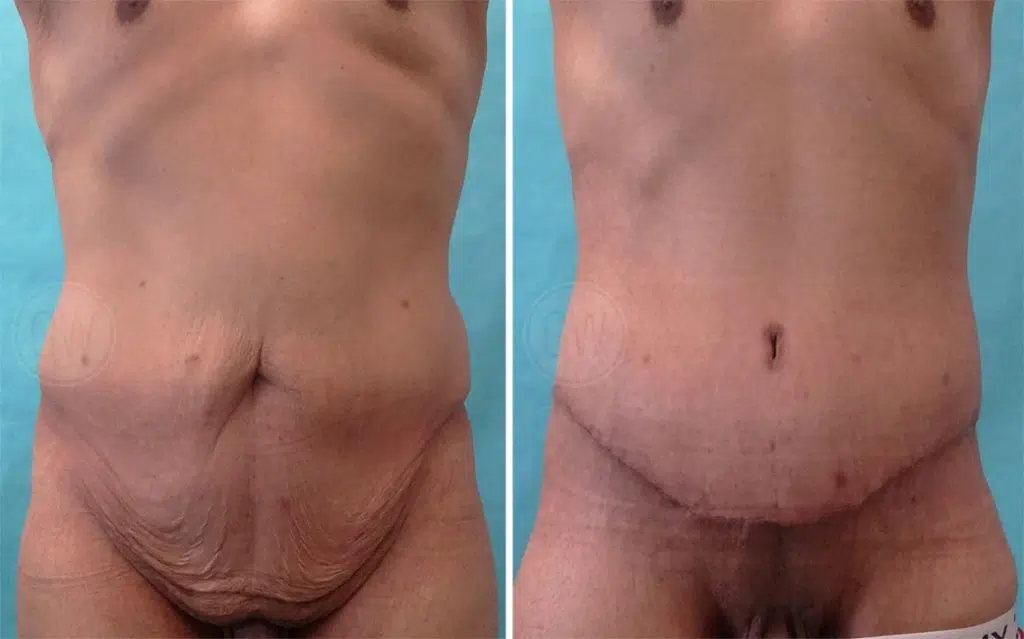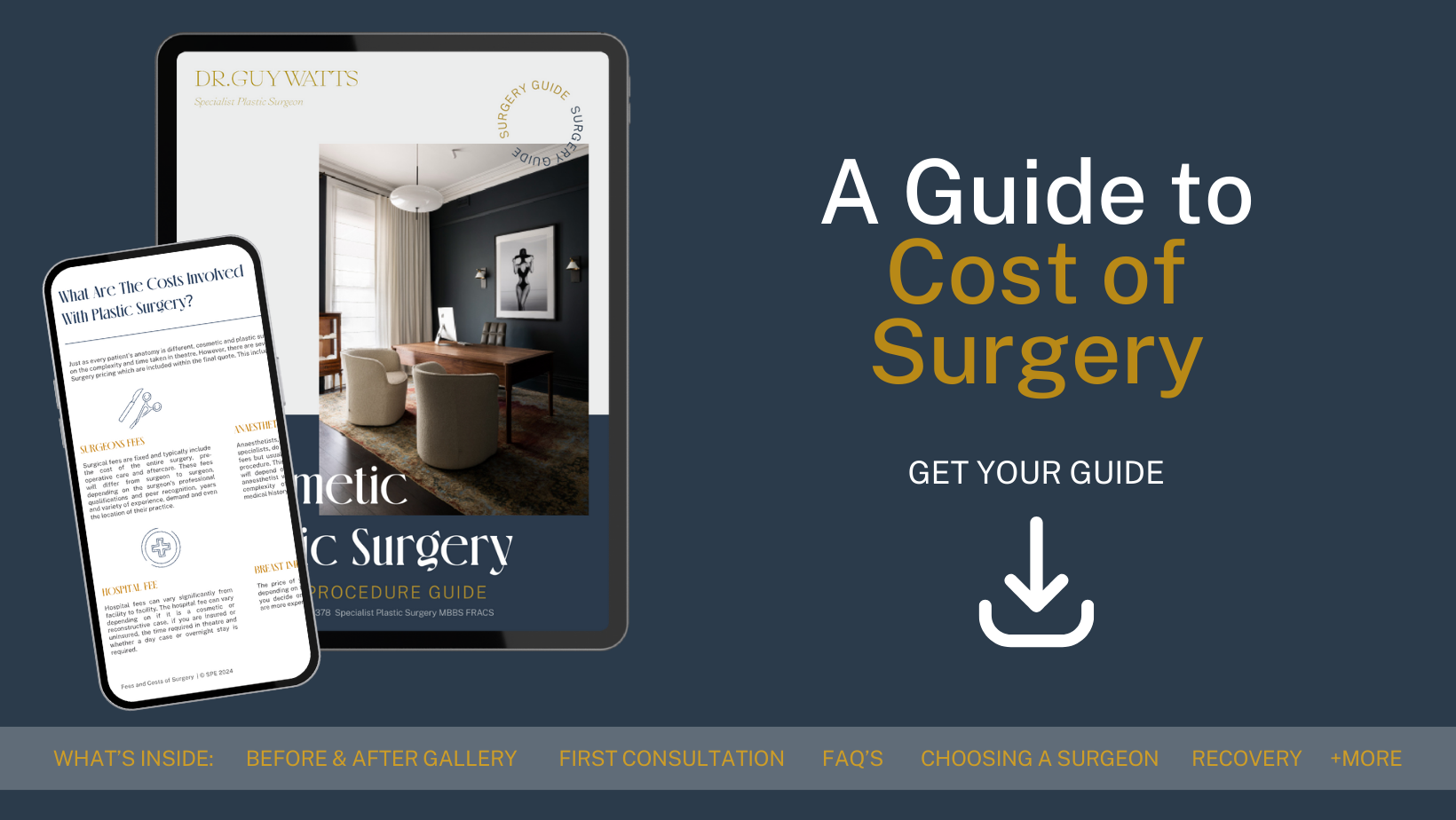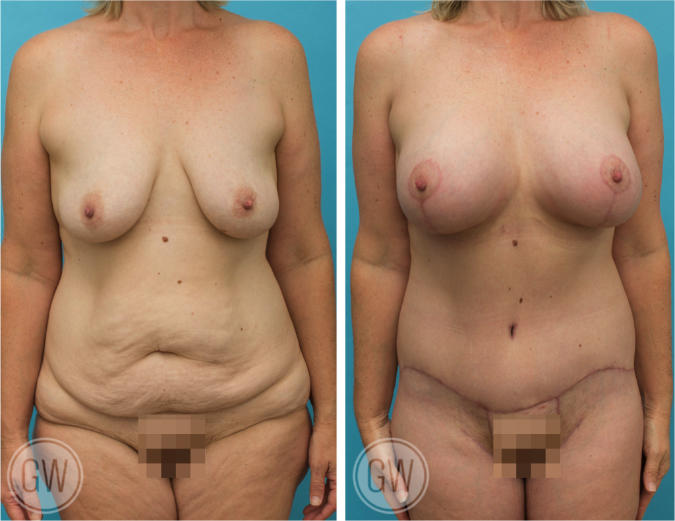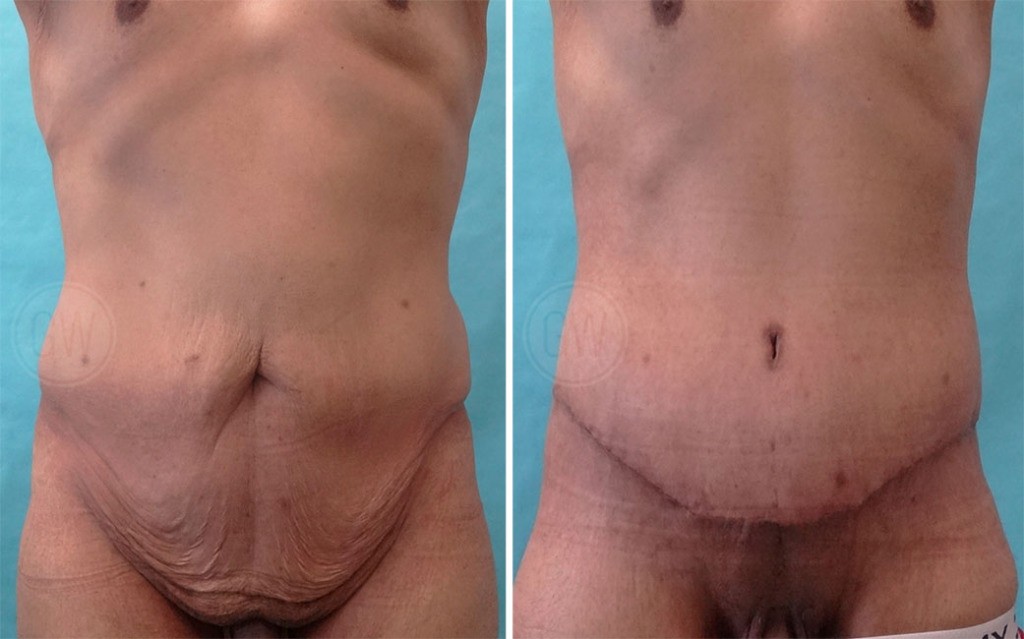
26 Oct Recovery After A Bodylift
A bodylift is a significant procedure that addresses loose or redundant skin, often following substantial weight loss or the natural ageing process. For many people in Perth, it represents an important step in regaining comfort and function. While much attention is often placed on the surgery itself, recovery is just as crucial. Healing properly allows the body to settle, incisions to strengthen, and long-term results to stabilise. Understanding what to expect during recovery helps patients approach the journey with realistic expectations and less uncertainty.
Dr Guy Watts, Specialist Plastic & Reconstructive Surgeon in Perth, Western Australia, emphasises that recovery should be seen as an active phase of treatment rather than a passive waiting period. Patients who are prepared for the demands of healing, both physical and emotional, often feel more in control and reassured as they move through the weeks and months after surgery. This procedure page explains recovery in detail, offering a clear timeline, describing what patients typically experience, and highlighting how professional support is provided throughout.
Take our quiz, and find out if you are ready for surgery
Understanding Recovery After A Bodylift
Recovery is the body’s way of adapting to change and repairing itself after surgery. In the case of a bodylift, the process is complex because large areas of skin and underlying tissue are repositioned and tightened. This is why the healing period is more involved than with smaller operations. The body must redirect blood supply to healing tissues, reduce swelling, and gradually form stronger scar tissue at incision sites.
It is important to view recovery not only as a physical event but also as an emotional journey. Patients often feel a mix of anticipation and vulnerability as they begin healing. Early on, there may be discomfort, swelling, and restricted mobility. Over time, these physical signs improve, but during the first few weeks, it is common for patients to feel fatigued or frustrated. These emotional responses are normal and are acknowledged as part of the process. Dr Guy Watts and his Perth team provide support throughout recovery, ensuring patients know what is expected and when to seek reassurance.
By understanding that recovery unfolds gradually, patients can approach it with patience. Each stage brings progress, and while there may be ups and downs, the long-term trajectory is one of healing and adjustment.
The First Days After Surgery
Immediately after a bodylift, patients are cared for in hospital. During this time, the focus is on safe recovery from anaesthesia, pain control, and the early stages of wound care. Nurses monitor vital signs, check incisions, and ensure patients are comfortable. Dressings are applied to protect the surgical sites, and small drains may be placed to help remove excess fluid. Some patients are also given compression garments to support healing tissues. Although rest is important, gentle assisted movement is usually encouraged soon after surgery, as it helps circulation and reduces the risk of complications such as blood clots.
Leaving hospital is a significant milestone, but it requires planning. Once discharged, patients either return to their home in Perth or to accommodation nearby if travel distance is a factor. At this stage, it is essential to have support. Family members or friends are encouraged to assist with transport, meal preparation, and everyday activities. Patients cannot drive immediately after surgery, and mobility is limited in the first few days. Setting up a recovery area with supportive pillows, easy access to water, and prescribed medication can make the transition home far more comfortable.
The First Two Weeks
The initial fortnight after surgery is often described as the most challenging stage. Physically, the body is actively healing, which brings swelling, bruising, and a degree of discomfort. These responses are a normal part of the process, but they require rest and careful self-care. Patients are advised to follow wound-care instructions closely and to attend scheduled reviews with Dr Guy Watts at his Perth clinic, where progress can be assessed and any adjustments made.
Emotionally, this stage can feel demanding. Patients may experience temporary feelings of doubt or frustration as energy levels remain low and mobility is reduced. It is important to recognise these responses as a normal reaction to the healing process. For many people, reassurance from their surgeon, combined with the support of family and friends, provides the encouragement needed to move forward day by day.
Everyday routines need to be adjusted during this period. Many patients find sleeping with additional pillows helps reduce swelling and avoid pressure on incisions. Showering techniques are adapted to keep wounds protected, and activities such as housework or shopping are usually delegated to others. By accepting these temporary adjustments, patients allow their body the best chance to heal effectively.
Weeks Two To Six – Regaining Independence
As the second stage of recovery begins, most patients notice a gradual return of strength and independence. Swelling begins to reduce, discomfort lessens, and walking becomes easier. Many Patients report feeling more confident in moving about their home and managing light daily activities. Despite these improvements, it is essential not to rush recovery. Strenuous lifting, bending, or exercise can put stress on healing incisions and delay progress. For this reason, activity levels are tailored individually, and patients are guided by Dr Guy Watts on when to increase movement safely.
Caring for the body continues to be a priority during this stage. Scar tissue is still forming, so incision care is vital. Compression garments may still be worn if recommended, and scar management strategies may be introduced under professional guidance. Many patients also begin to notice emotional improvement during this phase, as they feel less restricted and start to see early signs of healing.
Lifestyle choices play an important role in recovery. Eating nutritious meals that include sufficient protein supports tissue repair. Staying well hydrated helps with energy and circulation. Avoiding smoking and alcohol remains essential, as both can impair healing. Gentle activity, such as short walks, is not only physically beneficial but also helps patients regain a sense of normal routine.
DOWNLOAD DR WATTS’ GUIDE TO COST OF SURGERY

Six Weeks To Six Months – The Next Stage Of Recovery
The period between six weeks and six months is often when patients feel they are regaining normality. Many people are able to return to office-based work around the six-week mark, provided their healing is progressing as expected. Those with physically demanding roles may need a longer period of adjustment before resuming employment. Exercise can gradually be reintroduced, beginning with low-impact options such as walking, swimming, or stationary cycling. Higher-intensity activities, including strength training or running, require clearance from Dr Guy Watts to ensure that the healing tissues are not placed under undue stress.
Scars begin to mature during this time. At first they may appear raised or red, which can cause concern for some patients. Over the following months, however, they typically soften and fade. Scar management is an important part of recovery, and patients are given individual advice on suitable therapies. As scars evolve, many patients find themselves feeling increasingly comfortable in their own skin.
Emotionally, this stage is often uplifting. Energy levels rise, mobility is largely restored, and many patients feel more positive about their progress. Nevertheless, patience remains important, as full healing continues well beyond this point.
Six Months To One Year – The Final Phase Of Healing
By the six-month point, many of the temporary effects of surgery have subsided. Swelling is significantly reduced, incisions are stronger, and patients feel more stable. However, subtle improvements continue for months. The body is still adapting, and tissues continue to soften and settle.
At this stage, most people return to full activity, including exercise, travel, and recreational pursuits. Life feels less restricted, and the procedure becomes part of the background rather than the daily focus. Many patients describe this phase as the point where recovery feels complete, although final scar maturation may continue for up to 18 months.
Ongoing follow-up remains important. Regular reviews with Dr Guy Watts, Specialist Plastic & Reconstructive Surgeon in Perth, provide an opportunity to assess progress, address any concerns, and refine scar management strategies. This long-term support reassures patients that they are not alone, even many months after surgery.
Supporting Your Recovery At Home
The success of recovery depends not only on what happens in hospital but also on preparation and self-care at home. Patients who plan ahead often feel more comfortable and less stressed in the early weeks. Preparing a recovery space with essential items, arranging help with cooking and household duties, and setting aside time for rest all contribute to a smoother experience.
Equally important is emotional preparation. Recovery can bring moments of vulnerability, particularly when energy is low or mobility is limited. Acknowledging this in advance and building a support system helps patients manage these temporary challenges. Having family or friends who can provide both practical assistance and encouragement can make a significant difference.
Comfort is also central to recovery at home. Simple adjustments, such as using extra pillows to aid sleeping positions, wearing loose-fitting clothing, and keeping commonly used items within easy reach, can make everyday life easier. Patients in Perth are encouraged to prepare thoughtfully so that when they return home, they can focus fully on healing.
Bodylift Surgery Before and After Photos
Photo disclaimer:
Each surgical procedure produces unique outcomes influenced by factors such as body composition, skin tone, laxity, age, and genetics. The before-and-after photographs displayed are of actual patients and are provided for informational purposes only.
Risks And When To Seek Medical Attention
All surgery carries risks, and recovery after a bodylift is no exception. Most patients experience only the expected signs of healing, such as swelling, bruising, mild discomfort, and temporary changes in sensation. These usually improve with time and do not require urgent attention.
However, it is essential to be aware of warning signs. Increasing pain, spreading redness around wounds, sudden swelling, fever, or difficulty breathing are all reasons to seek medical help without delay. Patients under the care of Dr Guy Watts in Perth are encouraged to contact his practice promptly if concerns arise, and in urgent circumstances, to attend hospital for immediate assessment.
By understanding what is normal and what is not, patients can feel more confident in monitoring their own recovery while knowing that support is readily available.
Dr Guy Watts’ Approach To Patient Care In Perth
Dr Guy Watts, Specialist Plastic & Reconstructive Surgeon, is committed to providing a structured and supportive recovery pathway for every patient. His approach begins with thorough planning before surgery, where recovery expectations are discussed in detail. This preparation helps patients know what lies ahead and equips them with strategies to manage the early weeks.
Regular post-operative reviews at his Perth practice allow progress to be monitored closely. Patients receive individualised advice on wound care, scar management, and activity levels. Adjustments are made as needed, ensuring care remains tailored to the patient’s specific circumstances.
Importantly, support does not end when wounds have healed. Dr Watts continues to provide long-term follow-up, ensuring patients feel supported even months or years after their bodylift. This comprehensive approach reflects his belief that surgery and recovery are inseparable parts of the same journey.
Final Thoughts And Next Steps
Recovery after a bodylift is a gradual, step-by-step process that requires time, patience, and preparation. The journey begins in hospital, continues through weeks of rest and careful care at home, and extends into months of gradual return to full activity. Emotional adjustment is part of the process, and professional support helps patients navigate both the physical and emotional aspects of healing.
For those considering a bodylift in Perth, the most reliable way to understand recovery is through a personal consultation with Dr Guy Watts, Specialist Plastic & Reconstructive Surgeon. Every patient’s circumstances are unique, and discussing your health, lifestyle, and expectations in detail means that advice is accurate and tailored to your needs.
FAQs About Recovery After A Bodylift In Perth
Call To Action
If you are considering a bodylift and would like to understand what recovery may involve, you are welcome to book a consultation with Dr Guy Watts at his Perth clinic. This is the most effective way to gain personalised guidance and to prepare confidently for every stage of the journey.
Further Reading
- Read about Dr Guy Watt’s Blog on How to Get a Smaller Waist
- Read about Dr Guy Watt’s Blog on Recovery after Post Pregnancy Surgery
About Dr. Guy Watts – MED0001539378
FRACS (Plas) – Specialist Plastic Surgeon In Perth WA
Dr. Guy Watts is a Specialist Plastic Surgeon (AHPRA MED0001539378) with an extensive career that spans across renowned plastic surgery clinics worldwide. His experience has been honed through invaluable experiences at esteemed establishments such as the New York Eye and Ear Infirmary and the renowned Pitanguy Clinic in Brazil.
Having collaborated with the foremost cosmetic plastic surgeons on a global scale, Dr. Watts has chosen to return to Perth after a 17-year journey of intensive training and invaluable professional experience to bring the latest practices and technology in cosmetic plastic surgery to his patients.
Dr. Watts is a Fellow of the Royal Australasian College of Surgeons (FRACS) and a Member of the Australian Society of Plastic Surgeons (ASPS), Australasian Society of Aesthetic Plastic Surgeons (ASAPS) and the International Society of Aesthetic Plastic Surgeons (ISAPS).
Read about the potential Risks and Complications of Surgery
Read the Patient Information and Resources
About CLINISPA
Clinispa is Dr Watts’ bespoke medical clinic performing Cosmetic Aesthetic treatments. At Clinispa, we offer advanced clinical treatments in a luxurious and calming environment, tailored to support your skin’s health and appearance.
Clinispa aesthetic services are performed by Dr Guy Watts’ nursing professionals, who have a passion for and solid understanding of facial aesthetics.
All Clinispa clients are considered individually, with a personalised treatment plan consisting of advanced scientific approaches to cosmetic aesthetics. We incorporate innovative technologies in conjunction with superiorly formulated skin care.
For more information about the full range of Clinispa Aesthetic of Cosmetic Treatments visit the Clinispa website










Sorry, the comment form is closed at this time.